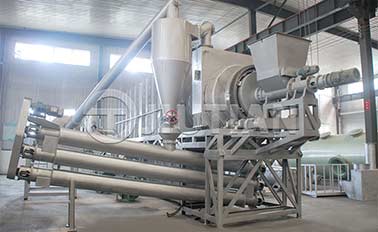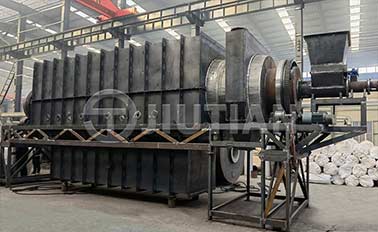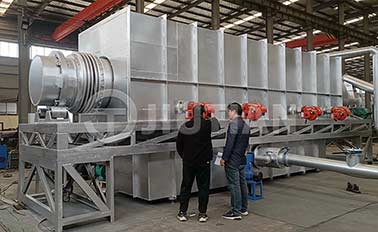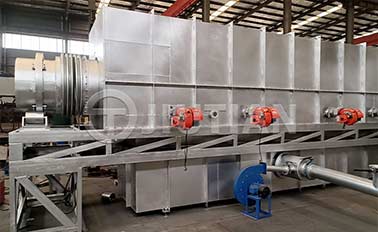Continuous carbonization furnace (also called drum carbonization furnace) is mainly used to carbonize raw materials with particle size less than 5MM to make carbon powder. These raw materials usually include waste materials containing wood fiber, such as rice husks, chaff, straw, peanut shells, sawdust, bamboo chips, bark, branches, etc., as well as some fruit shell materials such as coconut shells, pecan shells, olives Core, jujube core, etc.
1. Rice husk, chaff and straw, etc.: These raw materials can be widely used in various fields after carbonization, such as smelting in steel plants, copper plants, fireworks factories and mosquito coil factories, etc.
2. Coconut shell: Coconut shell charcoal is often used to make activated carbon because of its high density, hardness and good adsorption effect.

3. Eucalyptus bark: The price of this charcoal powder is relatively low and it is mainly used to produce mosquito coils. However, it has a larger ash content and may not be suitable for all applications.
4. Hemp stalk: Although the price is higher, it is mainly used for making lead due to its light weight and fast burning characteristics.
It should be noted that not all raw materials are suitable for direct carbonization. Some larger raw materials, such as coconut shell, eucalyptus bark, etc., need to be crushed first to ensure that their particle size is less than 5MM. Some smaller raw materials, such as sawdust, rice husk, etc., can be carbonized directly.

Location:Indonesia
Project Progress:Put Into Production

Location:Vietnam
Project Progress:Put Into Production

Location:Kenya
Project Progress:Put Into Production

Location:Canada
Project Progress:Put Into Production